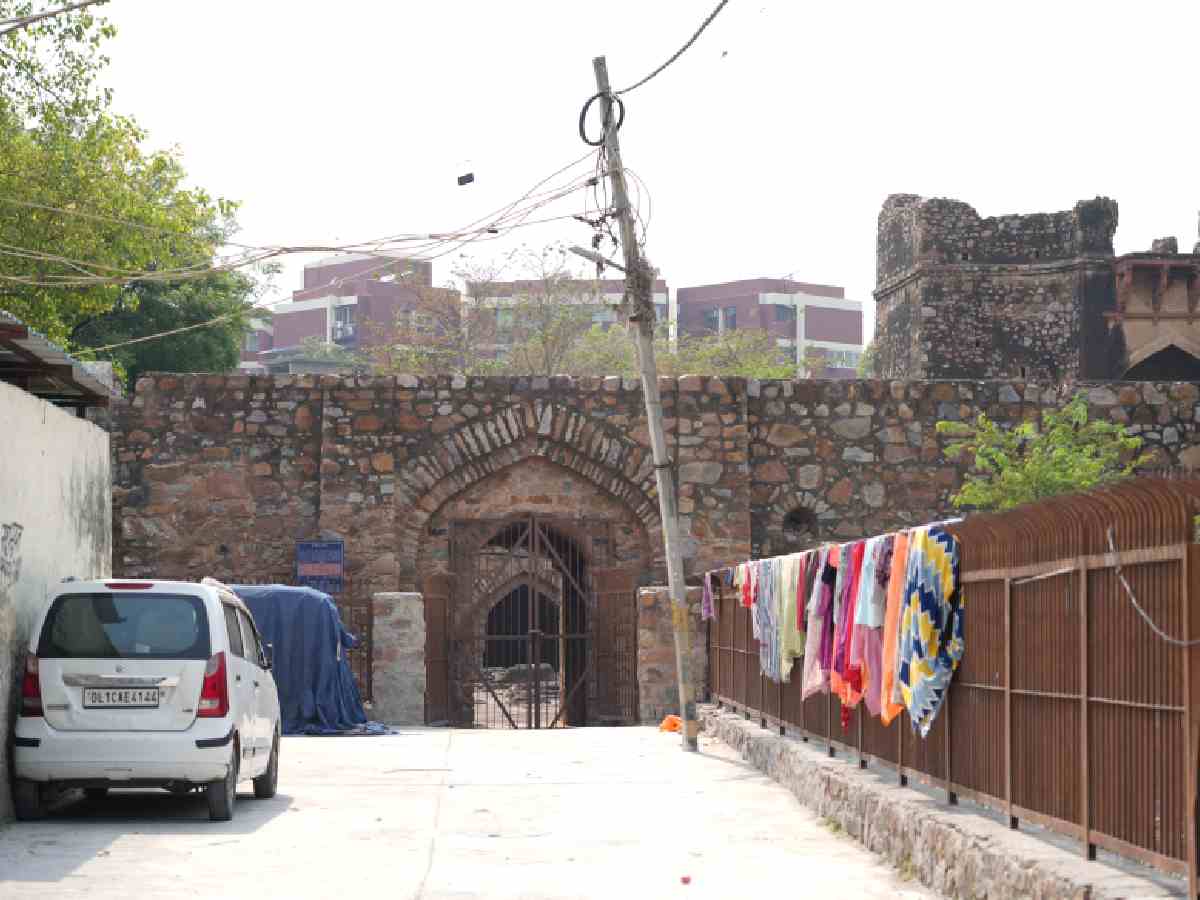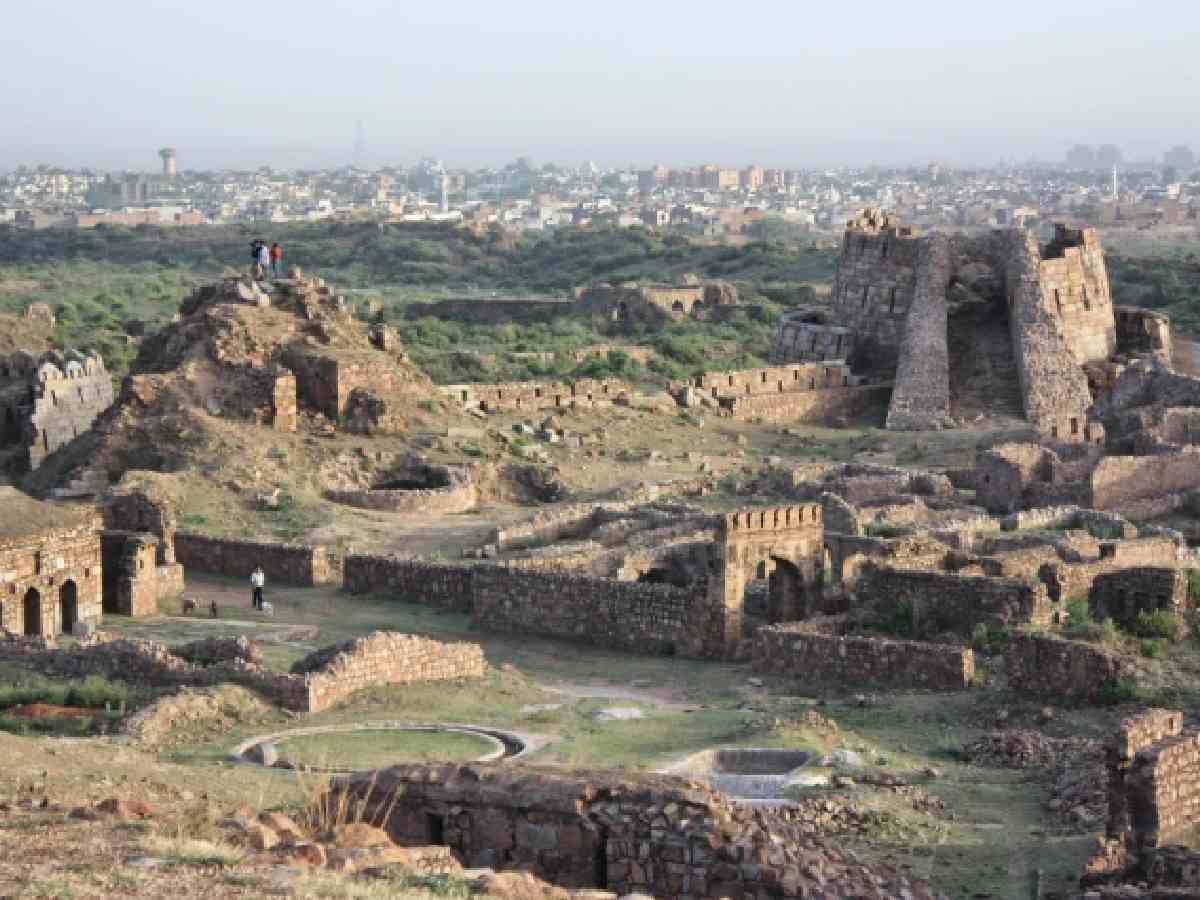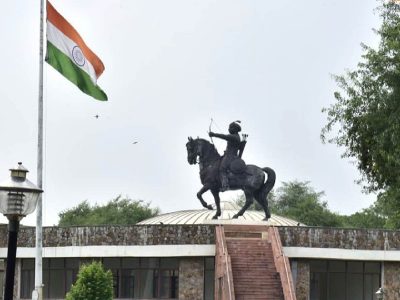In the rapidly expanding lanes of Delhi, centuries-old monuments are not simply fading with time—they are being buried under the weight of encroachment, construction, and administrative apathy. A Right to Information (RTI) query filed by Patriot with the Archaeological Survey of India (ASI), Delhi Circle, has revealed that nine protected monuments in the city have suffered encroachment, with many now surrounded by illegal settlements, shops, and debris.
These include a range of historically significant structures—from 14th-century forts and mosques to Mughal-era rest houses and colonial-era cemeteries. Many are now hemmed in by informal housing, commercial sprawl, and unauthorised construction, their historical value eroded by indifference and neglect.
Tughlaqabad Fort: Capital turned colony
Among the most prominent affected sites is Tughlaqabad Fort, built by Ghiyasuddin Tughlaq in the 14th century as the seat of his empire. Once intended as a grand imperial capital, the fort is today ringed by unauthorised colonies and dense settlements. Entire families live within and around the fort, with makeshift homes leaning against its ancient stone ramparts.
Satellite dishes and clotheslines now decorate the bastions. Children play cricket in the same courtyards where soldiers once marched. The hum of traffic has replaced the quiet of history.
“It is not an illegal settlement. We have been living here for many years,” said Imran Ahmad, a local resident of Tughlakabad village.
Begumpuri Masjid: A mosque among markets
In Hauz Khas, the 14th-century Begumpuri Masjid, constructed during the reign of Muhammad bin Tughlaq, is now hidden in plain sight—surrounded by narrow lanes, congested markets, and rows of shops. Once a thriving congregational mosque, it now receives only a few visitors, mostly photographers and stray pigeons.
Some sections of the boundary wall have been absorbed into neighbouring houses. Others are used to store goods. The solemnity of the space has been overtaken by the aroma of street food and the bustle of commercial activity.
“The government has named it as protected, but what protection is there? No one comes here to maintain it,” said Rehman Aalam, who lives nearby.
Atgah Khan’s tomb and Delhi’s vanishing cemeteries
Tucked near the shrine of Hazrat Nizamuddin lies the tomb of Atgah Khan, a noble in Emperor Akbar’s court. Despite its proximity to a popular pilgrimage site, the tomb has been swallowed by unregulated growth. Street vendors set up stalls against its walls. Its boundaries are blurred by nearby structures.
Two colonial-era cemeteries—Rajpur (Mutiny) Cemetery in the North District and D’Eremao Cemetery in Kishanganj—are in an even worse state. Tombstones lie broken, smothered by weeds, or hidden beneath rubble. In places, squatters have moved in. The inscriptions, weathered and vandalised, speak of a forgotten chapter of Delhi’s past.
Joga Bai, Sarai Shahji and Kashmiri Gate: Sites erased by the city
The Joga Bai mound, an archaeological site dating back centuries, is barely distinguishable from the cluster of buildings that surround it. Construction encroaches from all sides, and the site now competes with real estate for space.
Sarai Shahji in Malviya Nagar, once a Mughal-era resting place for travellers, is difficult to locate amid residential apartments and local shops. Much of the original structure is hidden behind encroachments.
Even the iconic Kashmiri Gate, associated with the 1857 revolt, has not been spared. Traffic congestion and nearby construction have diminished its visibility and prominence.

Meanwhile, Kotla Feroz Shah, the 14th-century royal citadel of Sultan Feroz Shah Tughlaq, has been hemmed in by hawkers, wedding photographers, and illegal structures—its open spaces now an extension of urban chaos.
Laws ignored, monuments lost
Despite being legally protected under the Ancient Monuments and Archaeological Sites and Remains (AMASR) Act, 2010, these sites continue to be encroached upon. The Act prohibits construction within 100 metres of a protected monument and regulates activity within a 200-metre buffer zone. Yet, enforcement has been lax.
An ASI official from the Delhi Circle, speaking on condition of anonymity, said: “We are constantly trying to reclaim and preserve what is left. We have taken regular actions against the encroachers by demolishing their structures or serving notices to them.”
Also Read: Delhi: 20 forgotten monuments get a much-needed facelift
In February, ASI told Patriot in a separate RTI reply that 5,360 show cause notices have been issued in Delhi to violators engaged in construction, repair, or unauthorised activities within prohibited zones.
Experts call for urgent action
Heritage experts warn that continued inaction could result in the permanent loss of many of these monuments.
“There are many monuments, especially in South Delhi, that are not on the ASI’s list of protected sites. Many have already vanished without notice,” said historian S Irfan Habib. “I have seen stray dogs roaming over these monuments and people playing cards there, which tarnishes their image.”
He added, “If the government comes forward with proper planning, these structures can still be saved.”




